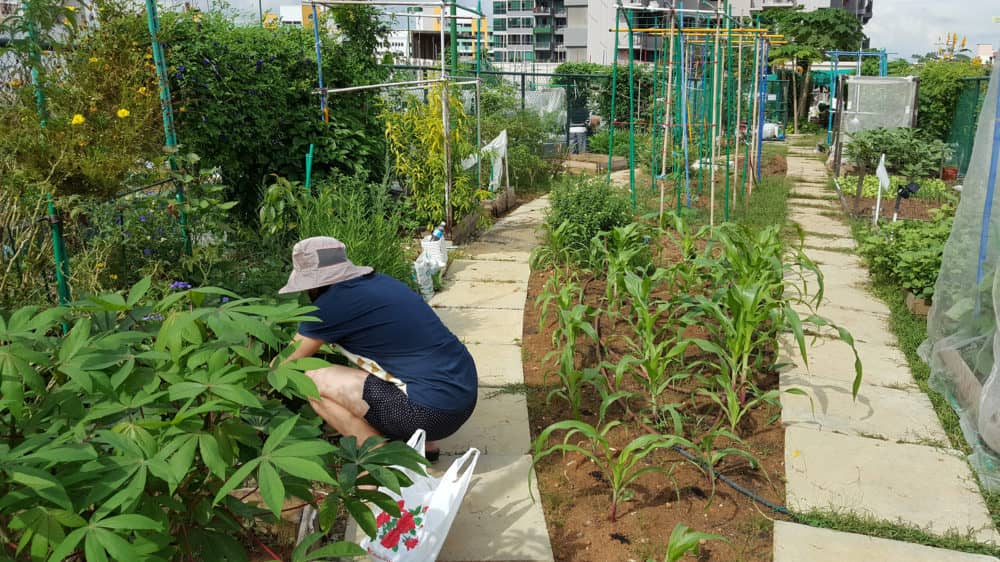
Buying a home in Sonoma County turned out to be our worst investment ever. Cannabis wasn’t legal, so a commercial-scale cannabis business in the area wasn’t part of our calculation when we purchased our dream home west of Sebastopol. After California legalized cannabis in 2016, Sonoma County allowed our neighbor to grow thousands of new cannabis plants 100 feet from us and other families.
Sonoma County’s cannabis ordinance defines the minimum distance between an outdoor cannabis cultivation and a neighbor’s property to be 100 feet apart. Your child’s swing set could be 100 feet from thousands of smelly cannabis plants or an armed robbery. Your garden, BBQ, patio? Yes, 100 feet from a commercial-scale cannabis field—that’s just seven car lengths away.
Our neighbor operates a commercial cannabis cultivation and leases the property from the owners, who don’t live there. The overwhelming cannabis odor is one example of how this business violates our right to enjoy our property, while the Sonoma County government disregards our complaints.
We’re not the only Sonoma County neighborhood to have a massive, unannounced commercial cannabis business overwhelming the families who live there. Sonoma County’s governing philosophy encourages cannabis businesses to proliferate throughout the county, complete the permit process later, wait for families to cobble a scrappy neighborhood opposition, and then ignore them. It’s a cannabis-first policy, which Sonoma County fast-tracked by skipping a neighborhood and environmental impact review.
What’s it like to live 100 feet from 15,000 cannabis plants? Does cannabis odor affect someone’s health? How far does that odor travel in our micro-climates? How are neighborhood wells and watersheds impacted? The California Environmental Quality Act (CEQA) mandates that county officials answer these types of questions to assess the impacts of a new cannabis ordinance, and act upon its results to ensure it doesn’t negatively impact residents, neighborhoods, and the environment.
Instead of abiding by the CEQA, the board of supervisors loop-holed their way around it, and relied on a weak assumption to fast-track cannabis proliferation. They assume cannabis businesses that operate legally inside a neighborhood must be better for the earth than illegal cannabis businesses hiding in the hills. Is that enough to avoid the CEQA? I don’t think so, especially since the supervisors skipped CEQA’s neighborhood impact study.
The supervisors claim they care about neighborhoods, as demonstrated during an April 10, 2018, hearing: Supervisor David Rabbitt said, “We need to push [cannabis cultivation] away from the residences.”
Supervisor Susan Gorin said, “Move the cultivation away from impacting residential neighborhoods.”
Supervisor James Gore said, “I turned-in a grow that was 200 feet from my house.”
Supervisor Shirlee Zane said, “We haven’t done enough to protect these rural neighborhoods.”
Supervisor Lynda Hopkins said, “We really need to focus on the impacts of cannabis cultivation.”
Yet today, two-and-a-half years later, the county still approves cannabis permits inside neighborhoods without referencing a CEQA study. To justify these permits, the county writes a “mitigated negative declaration,” which includes an outline of questionable environmental recommendations the grower should implement in effort to silence documented neighborhood opposition. These recommendations are not based on science or experience, and lack any plans or timelines to measure their success. For example, the county recommends planting new bushes and trees to reduce (not eliminate) cannabis plant odor wafting around the neighborhood. That unproven idea doesn’t work, but the permit is approved regardless. Between our backyard and our neighbor’s cannabis plants are several buildings, a hill crest, and three layers of trees. Even Supervisor Hopkins smelled cannabis odor from our kitchen door. The county writes that the new trees will deflect cannabis odor into the atmosphere. This trickery is an astonishingly poor policy, one that places tremendous burden on the residents to prove the adverse impacts of a cannabis business in a neighborhood, making it a cannabis-first policy.
Our neighbor also uses indoor cannabis cultivation sites starting 5 feet from their property lines. Sonoma County’s cannabis ordinance defines the minimum distance between an indoor cannabis cultivation and a neighbor’s property to be 0 feet apart. Cannabis cultivation should be at least 1,000 feet from its neighbors. A 1,000-foot setback distance is a primary method to protect neighborhoods. Fooling residents to grow bushes and keeping the setbacks at 100 feet are the result of an irresponsible government promoting a cannabis-first agenda.
Other California counties have a different approach to keep a proper distance between residents and a cannabis business. Yolo County, at two-thirds the population density of Sonoma County’s, conducted a CEQA study, in which the environmental impact report concluded that outdoor cannabis plants must be 1,000 feet away from neighboring properties. Why doesn’t Sonoma County think the same? Please help shape the county’s cannabis ordinance before a commercial cannabis business suddenly appears next to you.
Grace Barresi is one of seven families whose property completely encircles a commercial cannabis cultivation property. She speaks for more than 25 families who are impacted by this site. As of today, this cannabis business is without a county permit, but has been growing one acre of outdoor and indoor plants since 2017. Their lot size is 10 acres (ordinance minimum), and our parcel is 2 acres. We have pleaded with the county to change the ordinance and place commercial cannabis cultivation in more appropriate places. To contact Grace, write to her at 95472grace@gmail.com.




2 thoughts on “What’s it Like to Live 100 feet from 15,000 Cannabis Plants?”
All cannabis production should be comingled in one large parcel in a remote area where infrastructure, power, lighting, security can be provided to all. Somewhere near the airport or other area away from residential neighborhoods. Growers would rent space or form a co-op.
Marin and Napa counties do not allow pot cultivation. Why does Sonoma? Why do our Board of Supervisors feel the burn to make Sonoma County some new emerald triangle? Why? Follow the money perhaps.
Residents of Sonoma County approved Prop 64 so that their neighbors didn’t get arrested for lighting up a joint. They didn’t expect that their neighbors would be commercially growing the stuff. We drive cars but we don’t build them here.
Wake up – Remove supervisors who have sold us out to the cannabis lobby and let’s do this whole cannabis monster over. Other counties have adopted it, realized their mistake and got the hell out.
After living on our residential property for 30 years we now live next to a cannabis grow situated on 5 acres, 10 acres is required however the grower next to us was Grandfathered in allowing the 5 acre parcel to grow cannabis. We now live 300 FT from a cannabis operation that was awarded a Ministerial permit in 2018 for one year, in 2019 the grower was able to obtain a second year permit. In 2020 The grower’s permit was expiring which required a use permit to grow on the 5 acre parcel. Low and behold on the last possible day to make an application to the Board of Zoning Adjustments (BZA) the grower made an application for the new permit. A hearing has not yet been scheduled, but wait… they were still able to grow TWO cannabis crops in 2020 while they waited for the hearing. Yes that is right, they grew cannabis in 2020 with no permit in hand just an application made to BZA. They could of applied in early in 2019 for the hearing but no, they waited until the last possible day and were still allowed to grow without a cannabis permit in 2020.
Three neighbors have been enduring the cannabis smell now for 4 months for each of the last 3 years. At times during the growing season we have been unable to use our back yards due to the strong cannabis smell. During the hot nights of summer we are no longer able to open our windows due to the cannabis “SKUNK” like smell that fills the houses.
There has been NO PUBLIC hearing for this cannabis operation over the last three years. Our Sonoma County supervisors all stated that our rights would / should be considered when approving cannabis permits. However is a Ministerial Cannabis Permit is applied for there are NO Public hearings, just check all the boxes and a Cannabis permit will be issued….right next to your home.
Every neighbor should be provided due process. Applicants who receive a permit to grow cannabis should only be given permission only after it has been determined that their growing does not jeopardize the “health, safety, peace, comfort or welfare of the neighborhood or the general public” in accordance with Sonoma Count Code (SCC 26-92-070(a)). Remember the saying “Follow the money! ” to see why our Supervisors are allowing the cannabis grows next to residential property, this does not protect the publics health and welfare.